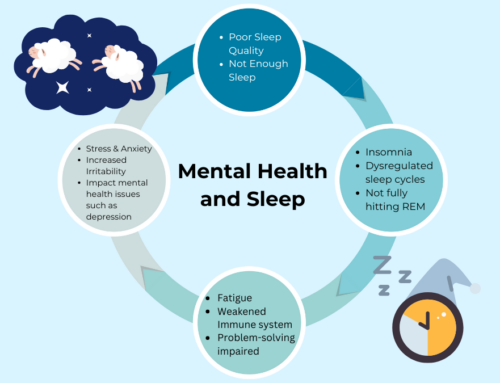In today’s fast-paced and competitive work environments, the mental health of employees often takes a backseat to deadlines, targets, and bottom lines. However, a closer look at the statistics reveals a troubling reality: mental health issues in the workplace are far more prevalent than we might imagine.
In this blog post, we’ll discuss the statistics surrounding mental health in the workplace and shedding light on ways to prevent workplace burnout.
- 15% of working-age adults were estimated to have a mental disorder in 2019 (osha.gov)
- 83% of US workers suffer from work-related stress and 54% of workers report that work stress affects their home life (osha.gov)
- A recent survey by the American Psychological Association examined 1,501 workers, with 79% experiencing burnout at their current job. Burnout and stress are everywhere (apa.org)
What does work burnout look like?
Burnout is a state of chronic physical and emotional exhaustion that results from
prolonged periods of high stress. Recognizing the signs of workplace burnout early and taking steps to address it can help individuals recover their well-being and prevent long-term negative consequences on both their personal and professional lives.
Key characteristics of workplace burnout include:
- Exhaustion: physically and emotionally drained
- Detachment and Pessimism: can lead to a negative and detached attitude toward work and may withdrawal from social interactions at work
- Increased Irritability: may become more easily frustrated and experience a decrease in patience
- Physical Symptoms: can manifest as headaches, gastrointestinal problems, and sleep disturbances
- Cognitive Impairment: may experience memory problems, difficulty problem solving, and reduced levels of creativity are common
- It’s important to note that burnout is not the same as occasional stress or having a bad day at work. It is a prolonged and chronic condition that results from ongoing, unmanaged stressors. Burnout can be caused by a variety of factors, including heavy workloads, lack of control over one’s job, inadequate resources, unrealistic expectations, and a lack of support from supervisors or colleagues.
How can we prevent it?
- Set Boundaries: Establish clear boundaries between work and personal life.
- Avoid taking work-related calls or responding to emails during your personal time.
- Time Management: Organize your work tasks and prioritize them. Use time management techniques to help reduce stress.
- Seek Support: Reach out to colleagues, friends, or a supervisor for support when you’re feeling stressed, overwhelmed, or burnt out. Don’t hesitate to discuss your feelings with people you trust.
- Take Breaks: Regular breaks throughout the day can help you recharge and reduce stress. Even short breaks for a walk or deep breathing exercises can make a difference.
- Mindfulness and Relaxation: Practice mindfulness techniques, meditation, or relaxation exercises to manage stress and stay present in the moment.
- Physical Health: Maintain a healthy lifestyle by eating well, exercising, and getting enough sleep. Physical health is closely linked to mental well-being.
This article was contributed by College of William & Mary Clinical Mental Health Counseling Master’s Student, Rachel Bradley.
For More Information
Tom Oxley: Workplace Mental Health – all you need to know (for now) | TED Talk
References
Related Articles
Start Living Constantly Healthy Today
Same Day Therapy with Weekend & Evening Availability







